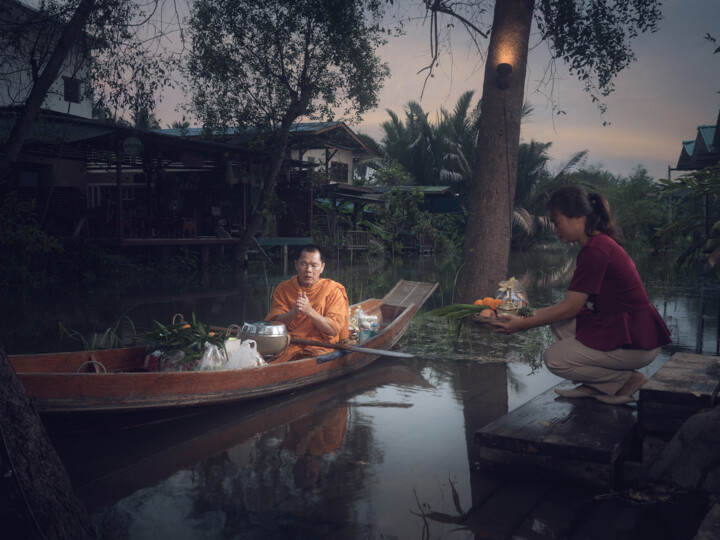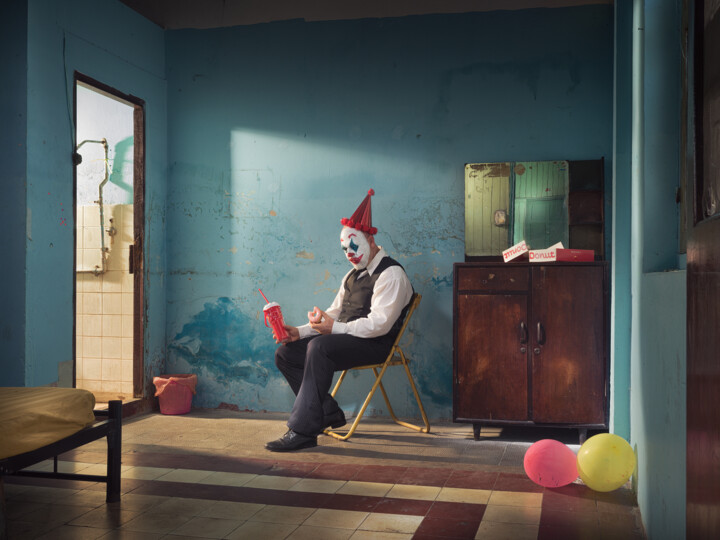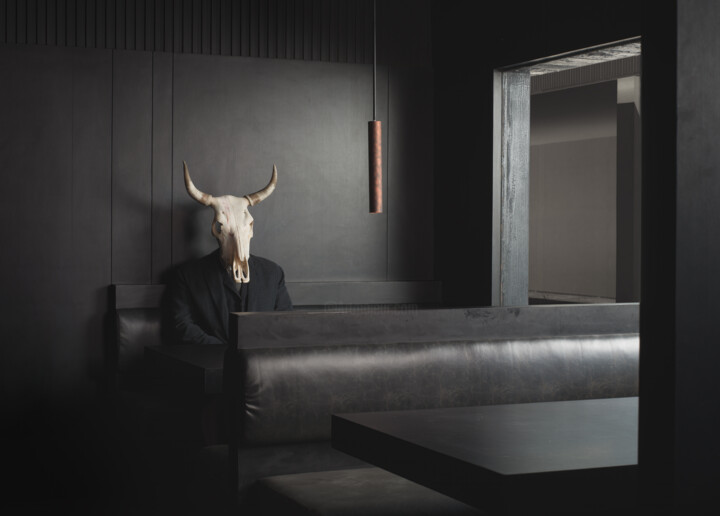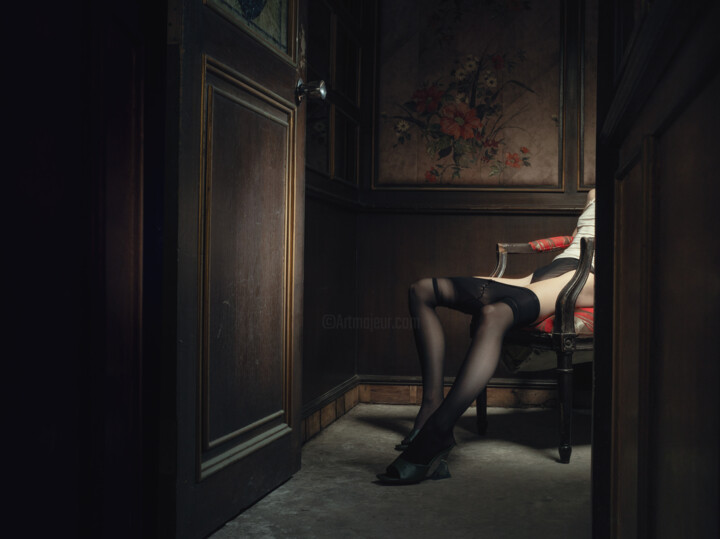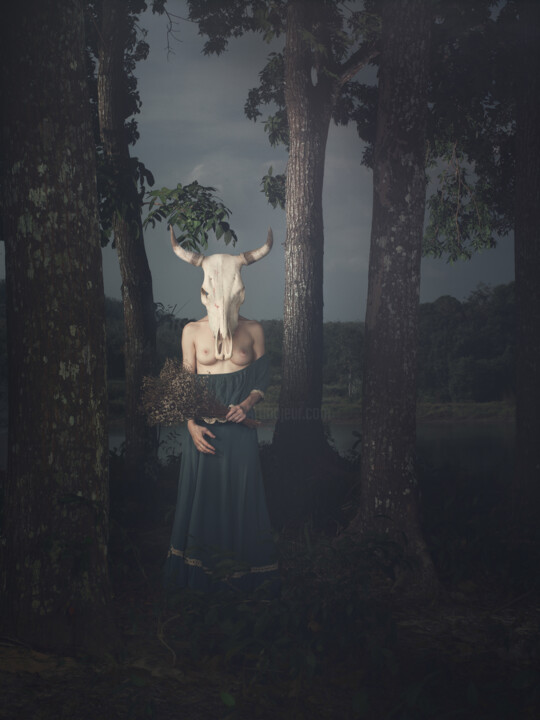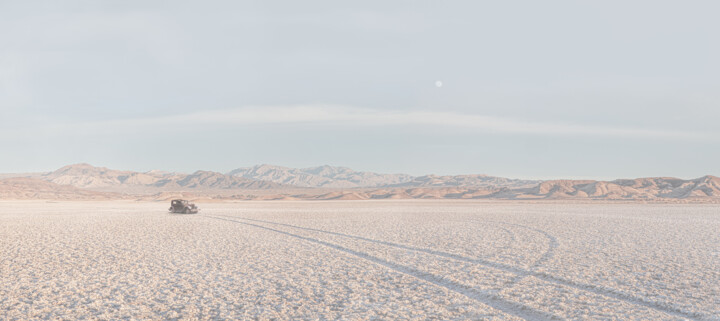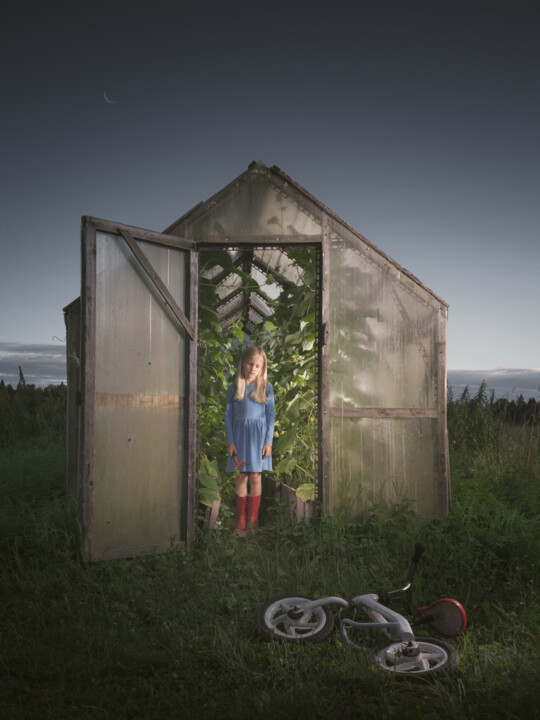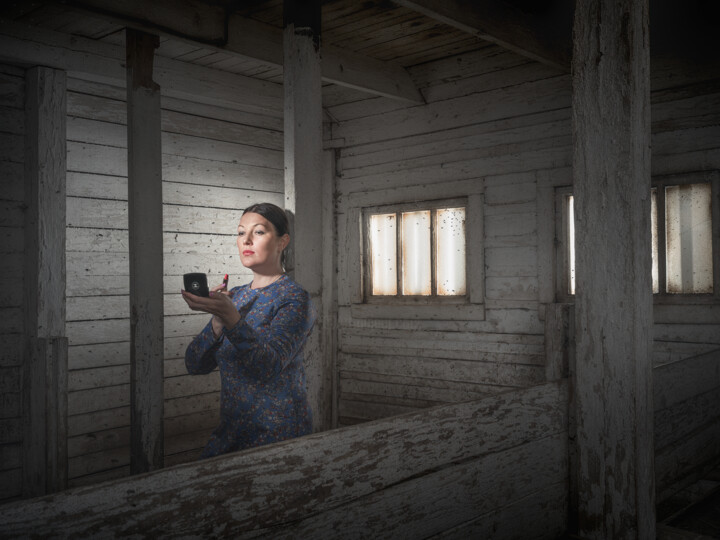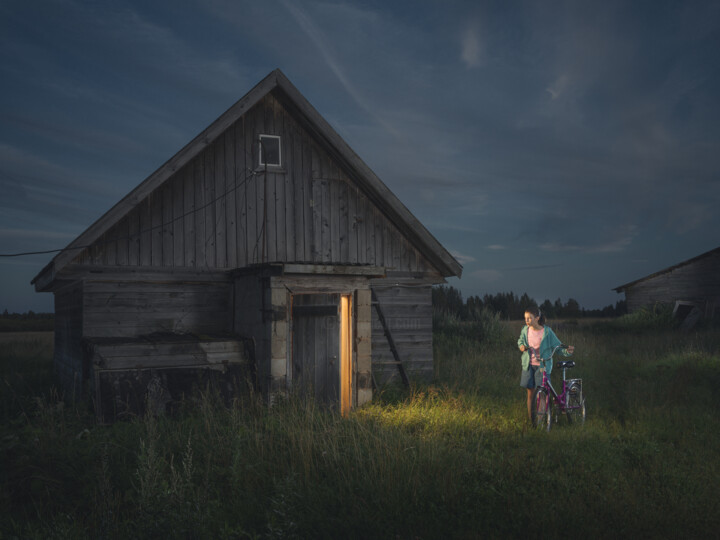What inspired you to create art and become an artist? (events, feelings, experiences...)
Nothing inspires an artist to create a work as strongly as the desire to share their imagination, emotions, and experiences. Sometimes, a certain idea, thought, or fantasy triggers such intense emotions in you that you inevitably wish for those around you to experience these very feelings.The need for self-expression, the necessity to share the figments of the mind, and the ability to evoke emotions in people through the viewing of your works are, in my opinion, what compels an artist to be an artist.
What is your artistic background, the techniques and subjects you have experimented with so far?
It seems to me that every artist, on his creative career, explores different methods, employs various techniques, and experiments with styles, trying their hand in different genres. Only through such exploration can an artist develop their own style and define a unique approach that sets them apart from others. I started practicing photography in my childhood under the guidance of my father. It was my initial experience – developing film in black round cans, drying, printing with a photo enlarger, developing the shot, fixing, and drying. Later, my experiments continued. I captured portraits of family and friends, tried my hand at stock photography, and spent several years working as an interior photographer for the magazine "Best Interiors."
A few years ago, I initiated an ongoing series of photographs titled "Russia At Dusk," where I delved into the lives of ordinary people in the Russian provinces, exploring their daily routines and lifestyles. It was a fascinating experience. I attempted to blend staged photography with journalism, using elaborate lighting setups to give the images a cinematic feel, yet refraining from preparing locations, models, or wardrobes. I captured everything as it was, photographing people in their own houses, workplaces, with their belongings, animals, their cars.
Recently, I embarked on another series of photographs featuring interiors that I created as miniatures. I aimed to shoot portraits in unconventional settings, ones that are often challenging to find and rent for a photoshoot. Therefore, I decided to make the miniatures myself, photograph the models in the studio, and then create a collage in Photoshop. I hope that my explorations will not cease and will continue into the future.
What are the 3 aspects that differentiate you from other artists, making your work unique?
The first distinctive feature of my works is the narrative. I always want to add a story to the image, to depict a certain tale. I can use interior details or specific objects, drawing attention to them through lighting or composition. The second aspect, in my opinion, stems from the first—it's about compelling the viewer to pause in front of the image, reflect, and start asking questions. What is happening to the character? Why is this happening? What occurred before this moment, and what will happen afterward? The third aspect is lighting. I prefer subdued light, something more cinematic, with numerous light accents. In the case of interior shots, I try not to reveal the actual time of day, aiming to perplex the viewer.
Where does your inspiration come from?
This is a very profound question. Inspiration can come from anything seen or heard—be it from watching a film, paintings, or photographs by other artists, or from a scene observed randomly on the street. Inspiration arises from thoughts and fantasies. Sometimes, a specific location in an interior or outdoors can inspire the creation of an image. That was the case with my work "The Man and the Boat." I saw this deserted sandy shore where, during low tide, solitary fishing boats stood. One boat was without a motor, very old, and I immediately wanted to capture a photo with a person standing by this boat, as if blending with the solitude and perhaps the uncertainty that lies ahead.
What is your artistic approach? What visions, sensations or feelings do you want to evoke in the viewer?
Here, the second part of the question partially serves as an answer to the first question. My artistic approach is to evoke certain feelings and experiences in the viewer. As mentioned earlier, I often try to embed a narrative, a story into the image so that the viewer perceives that there was a past, there is a present, and there will be a future once they step away from the image. Making the viewer speculate about what happened in this past and what will happen in the future is my approach.
What is the process of creating your works? Spontaneous or with a long preparatory process (technical, inspiration from art classics or other)?
I usually create each photograph very meticulously. The preparation process can take several days or even weeks, as was the case with my series "Room #304," for which I spent a month preparing the interior layout. I arrive at the location in advance, sometimes multiple times. I take preliminary shots, compile a list of necessary equipment and props. I select models, makeup artists, hair stylists, wardrobe, accessories, and interior items. I plan poses, composition, and lighting. However, there are exceptions in my approach. For example, during the creation of portraits from the "Varanasi" series, there was no time for preparation. I arrived at the riverbank of the Ganges at dawn already equipped, with a team and accompanied by translators, and simply photographed the people who were willing to pose.
Do you use a particular work technique? if so, can you explain it?
I don't use any special techniques in my work. I shoot with a medium-format camera, always on a tripod. However, I use a lot of flashes to create unique lighting. Sometimes, I also use a smoke generator and colored filters for flashes. I do initial post-processing in Capture One or Lightroom, and then I finish retouching in Photoshop.
Are there any innovative aspects in your work? Can you tell us which ones?
One innovative aspect I consider is the use of style blending in the "Russia At Dusk" series, as mentioned earlier. I wanted to create a series of staged photographs with cinematic lighting while preserving the spirit of journalism, conveying the setting with documentary accuracy, including the shooting location, details, and the models' wardrobe. In other words, I merged documentary photography with staged photography. I have never seen anything similar from any other photographer. I would like to see similar images from other countries and regions.
Do you have a format or medium that you are most comfortable with? if yes, why ?
I particularly enjoy creating portraits of people in unusual places. These can be authentic interiors, intricate rooms or corridors, hotel rooms, and the like. I strive to seamlessly place my subject in this interior, making the space part of the narrative. Perhaps, this is the most comfortable environment for me.
Where do you produce your works? At home, in a shared workshop or in your own workshop? And in this space, how do you organize your creative work?
I create my works in various locations. These can be professional studios or interesting places where I conduct photo shoots. Afterward, I return home for post-processing. At home, I have my small studio for smaller projects, a workshop for creating necessary items, a room for retouching, and a small storage space for props. However, the process of creating an image is not limited to the studio. Essentially, it can be any place. For example, during the creation of the "Russia At Dusk" series, I lived and worked in my parents' country house in a small village in the Tver Region. The following year, I lived in a small city in the Orenburg Region in an apartment provided by relatives.
Does your work lead you to travel to meet new collectors, for fairs or exhibitions? If so, what does it bring you?
Any encounters with collectors, trips to fairs, and exhibitions are always new opportunities, a chance to make oneself known, and to talk about new works and achievements. Even if such trips do not bring direct income, any artist should not avoid such events. The art market operates in a unique way. Collectors always want to know as much as possible about the artist. Meetings with collectors serve as a reminder of oneself, an opportunity to make a good impression, and this sooner or later leads to the sale of works.
How do you imagine the evolution of your work and your career as an artist in the future?
I strive to continue creating new works, showcasing them to the audience, surprising people, and winning their admiration. I will experiment with new approaches, styles, and methods to avoid standing still but rather move forward. This journey is an integral part of any artist's life. My aspiration includes refining the technical foundation, studying the works of other artists to make my style unique and distinctive, and winning the hearts of viewers and collectors.
What is the theme, style or technique of your latest artistic production?
My latest series of works is titled "Pink Lady." “Pink Lady" is the name of a nightclub, more likely a brothel, that existed in the 1980s in the old part of Phuket Town and was patronized by figures from the Chinese diaspora. Many years have passed since then, the world has changed, but the interior has remained the same. Wooden staircase with stained handrails. Soft carpets on the floor. Chesterfields. Warm lamps with a fabric lampshade.¬. Wooden panels on the walls. It's not every day that a photographer encounters an interior that is both inspiring and full of texture. I felt fortunate to capture several female portraits in a fine art style within this unique environment.
Can you tell us about your most important exhibition experience?
My latest series of works is titled "Pink Lady." “Pink Lady" is the name of a nightclub, more likely a brothel, that existed in the 1980s in the old part of Phuket Town and was patronized by figures from the Chinese diaspora. Many years have passed since then, the world has changed, but the interior has remained the same. Wooden staircase with stained handrails. Soft carpets on the floor. Chesterfields. Warm lamps with a fabric lampshade.¬. Wooden panels on the walls. It's not every day that a photographer encounters an interior that is both inspiring and full of texture. I felt fortunate to capture several female portraits in a fine art style within this unique environment.
If you could have created a famous work in the history of art, which one would you choose? And why ?
This is a very challenging question because I love many works of art, and there are numerous pieces I would like to create. It's very difficult to choose just one without slighting the others.
If you could invite one famous artist (dead or alive) to dinner, who would it be? How would you suggest he spend the evening?
If we consider a writer to be an artist, I would invite Ayn Rand. Since the question mentions inviting someone to dinner, I would be delighted to spend an evening with her over dinner.






 Olimpia Gaia Martinelli
Olimpia Gaia Martinelli

